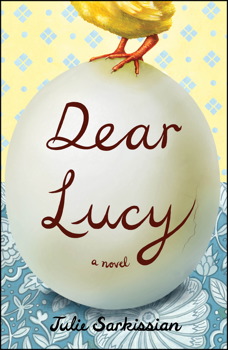The Best Story I Read in a Lit Mag This Week: “Entity” by Mira Mattar
If I think back to the best people I’ve known—those who were my favorites, who were most alluring, engaging, and alive, the personalities that took up space in the world—there’s not necessarily a common thread between all of them. That’s not all that surprising. Humans take different shapes. What fits on one is a misshapen disaster on another.
 But what is it that makes us want to know more about someone in the first place? What is it on first glance or meeting that arrests us, sharpens our focus, and disrupts the otherwise patterned existence of everyday life?
But what is it that makes us want to know more about someone in the first place? What is it on first glance or meeting that arrests us, sharpens our focus, and disrupts the otherwise patterned existence of everyday life?
I want to know the same thing about the characters I read. How do characters keep my attention when they first appear on the page, while I’m riding a crowded train or flipping through a novel in a bookstore?
Reading through journals this week, I especially wanted to know more about the narrator of Mira Mattar’s story “Entity.” Featured in PANK, “Entity” is a story of attraction—or something like it. The narrator and her nameless male companion meet on an online dating site. Their relationship, which seems mostly about sex, develops yet never moves offline. She sends him photos of herself. He instructs her how to pose when they Skype. He makes demands over email. But as I was reading her story again for a second and third time, I wanted to know—what is it about this character that keeps drawing me in?
Although Mattar does write two characters who find an attraction to one another—albeit a strange and unlikely one—I’m more interested in how she was able to create a narrator who reveals little about herself but still manages to keep me hooked. Most of the story is a description of the correspondence between them. We don’t get to see her life outside of this relationship, although there are gestures.
Mattar writes a scenario that comes along with a certain set of expectations. We expect a woman sending pictures of herself to take the recipient’s responses to heart, since, for many of us, the act of undressing is also the act of making ourselves vulnerable. But after she sends him a photo of herself in underwear with a fruit pattern on them, he writes back “bet u taste sweet” and the narrator laughs “because he wasn’t there to hear.” In a situation that’s supposed to be given some gravity (naked pictures intended to arouse are hilarious business until you’re the one in them), the narrator refuses to take either herself or him seriously.
This might be my favorite thing about Mattar’s story—our dominant cultural narrative might have us believe that the kind of women who get involved with relationships like this one, relationships where women “give up” their bodies, either in digital form or physically, are somehow broken, sad, lonely women. Our bodies are supposed to be most valuable part of us. Yet the narrator rejects this idea: “I’m sending parts of me,” the story opens. “No, not me, just my body.”
Perhaps I’m slipping into appreciation for the personality of the character, rather than how her presence adds mystery to the narrative here—but this narrator? She’s got attitude. She rebels, and gets what she wants. This trait could be her defining characteristic, and instead of feeling reductive, her subtle mockery and derision makes the world she occupies feel larger.
There’s a big difference in feeling a lack when we know little about a character, and feeling the intrigue that is created in the space between disparate information about a character’s life. It’s a fine line, and I think about this often, especially when working on shorter fiction. As a writer, you don’t want your reader wondering who your character is. It’s the difference between “I need to know more” and “I need to know more.”
When the narrator in Mattar’s story references how her roommates go out, how she sends her online correspondent lines from Chris Kraus, how she notices that all of his favorite authors are men, she takes up more space in the story. The gaps in information—who are these roommates? what else does she read?—don’t jump out at the reader because the details that Mattar reveals are distinct enough that the narrator feels like a rounded character. We want to know more about her. She becomes mysterious. There is more to her and more to her life, and that’s what keeps us reading: the desire to find out.
And speaking of more, there’s a lot more to appreciate about this story, so you should click over to PANK and give it a read. Hopefully you’ll be as drawn in as I was.
“The Best Story I Read in a Lit Mag This Week” is a series focused on—you guessed it—great pieces of fiction in recent issues of literary journals. Have a journal you think I should check out? Tell me about it in the comments or shoot me an email at lymreese at gmail dot com.


